A best-in-class agent portal experience is critical in securing and sustaining an independent agent’s business and becoming a carrier of choice for independent agents. For this reason the quality of the agent portal matters.
Frequently, these systems are overlooked as carriers focus their design and development efforts on customer facing interfaces, leaving agents, most of whom work with many different carries, stuck learning and navigating multiple cumbersome systems. Sometimes the trouble may not be worth the small or incremental commissions earned from business with a carrier.
And while it may not be rocket science to fix them, taking the time, the money and the effort to design these systems to be user friendly and easy to work on can go a long way in securing an independent agent’s business.
A best-in-class agent portal should...
1. Be convenient and easy to use
While some of the below may seem obvious, many existing agent portals are built on top of legacy systems and thus may fail to meet basic, current standards of usability, making them burdensome and frustrating for agents to use.
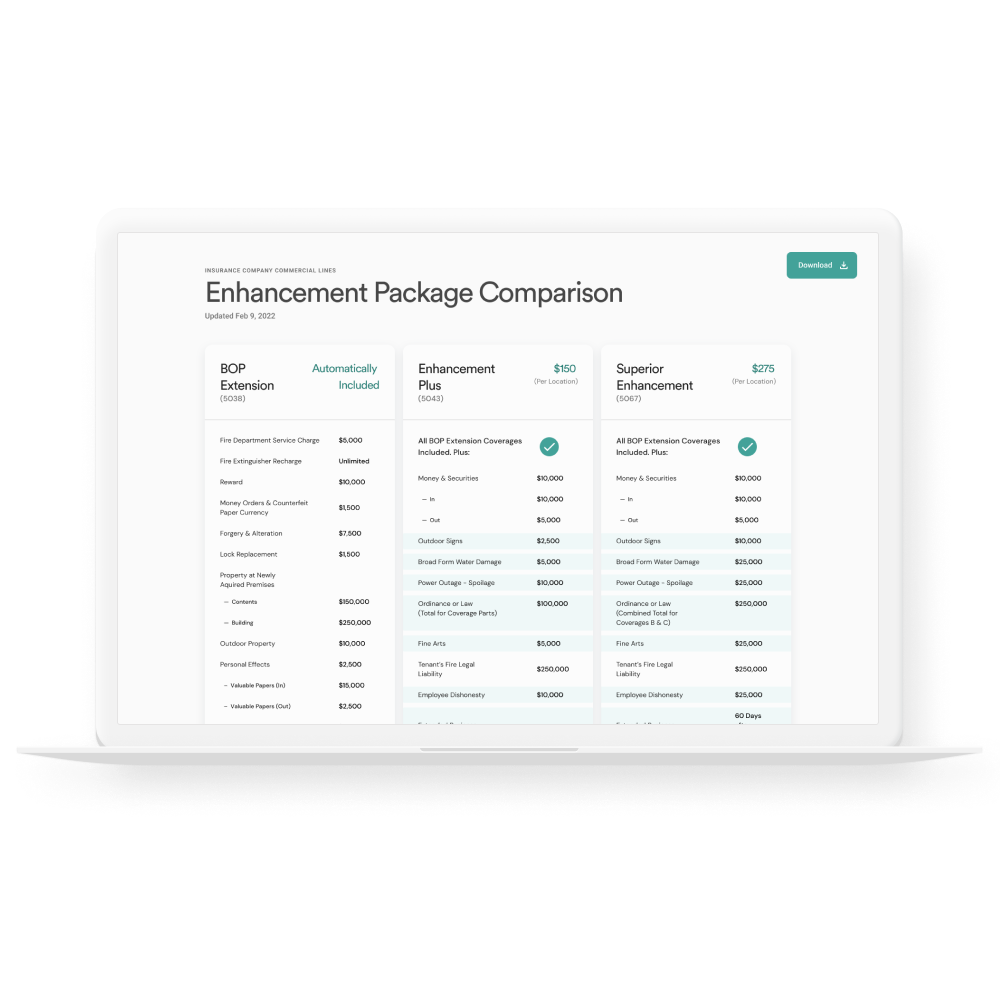
For maximum convenience, you’ll want to ensure that your portal:
-
Loads quickly
A small but impactful thing, following best practices when it comes to web performance optimization to ensure your pages load quickly and display in the web browser will go a long way in building trust with agents. -
Supports a keyboard interaction model
Because wizard-based processes are form heavy, anything you can do to make filling out forms easier and more efficient for users, requiring as few keystrokes as possible, will greatly enhance usability. -
Prefills data, when possible
Because independent agents are working with multiple carriers across platforms, filling in data can become especially tedious and time consuming. Pulling in as much 3rd party data as possible to get data entry to a minimum can greatly improve the agent experience. -
Employs good information density
especially for advanced users. While it might not always look pretty, agents want to see as much information as possible in one view to avoid too much scrolling back and forth. You want your pages to be as dense as possible while still being readable. -
Supports single sign on
so agents can use existing Google or Microsoft sing in as their portal credentials, eliminating another hurdle to accessing your portal.
2. Have a consistent user experience, across user roles
Again, because so many agent portals are built on legacy systems and have been cobbled together over the years to accommodate new functionality, it is not uncommon for significant inconsistencies to exist across the user experience. Fortunately there are a few basic things that can be done when designing (or redesigning) an agent portal that can ensure consistency in the experience now, and into the future.
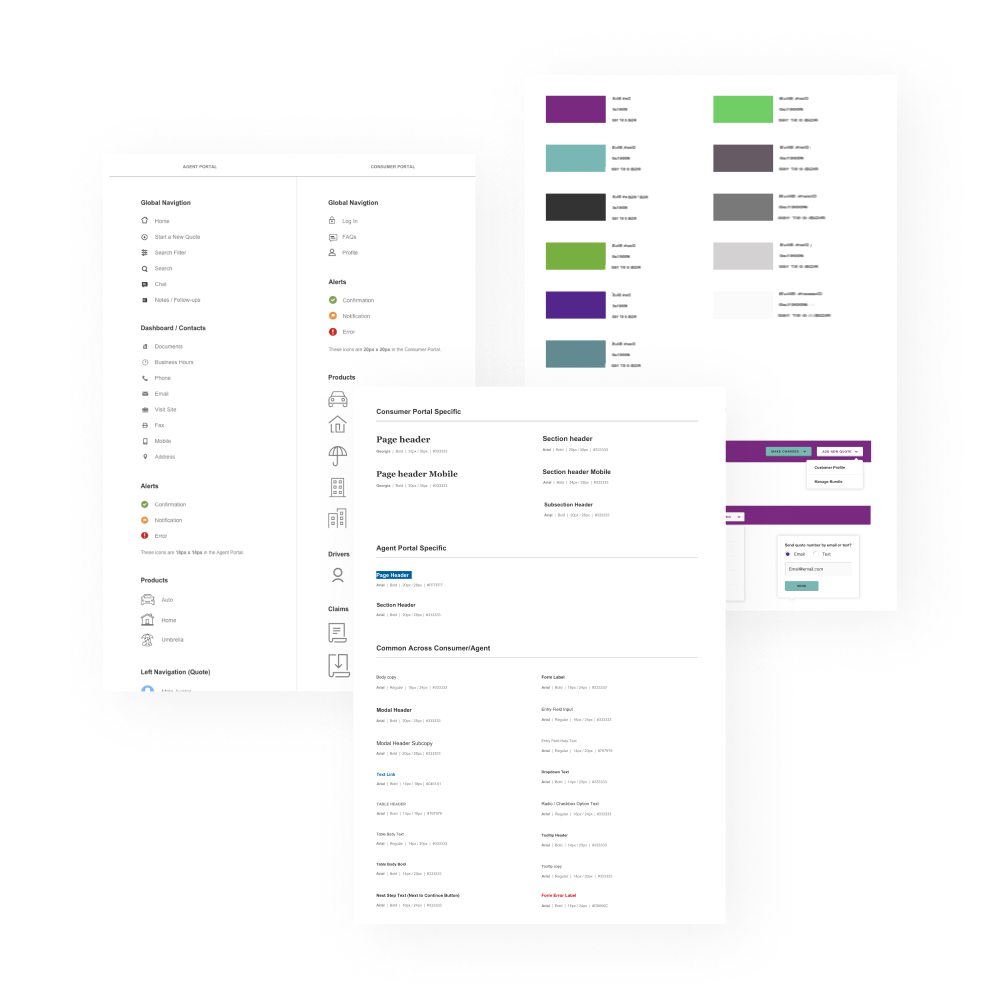
To ensure consistency, you'll want to make sure your agent portal:
-
Implements a design system
so that no matter where different users go in the portal they have the same, consistent experience. This will help ensure that even as you add new features and functionality over time, the experience remains seamless. -
Follows established conventions
for different user roles. Defining user roles from the outset of the design and defining the features and data each needs to support their role in the sales and marketing process will be key in creating consistency across each role and across the platform as a whole. -
Provides high quality out-of-the-box defaults
that meet best-practice usability standards and are aligned with the business requirements. Focusing time on designing good views and flows out-of-the box can limit the need for customizations requiring development resources
3. Be configurable and customizable for different user roles
Part and parcel with consistency is configurability. Designing a configurable portal that implements a design system will not only ensure a seamless user experience—now and as changes and new functionality are implemented—but will allow you to quickly respond to customer feedback while also giving users the ability to customize the portal to meet their specific needs.
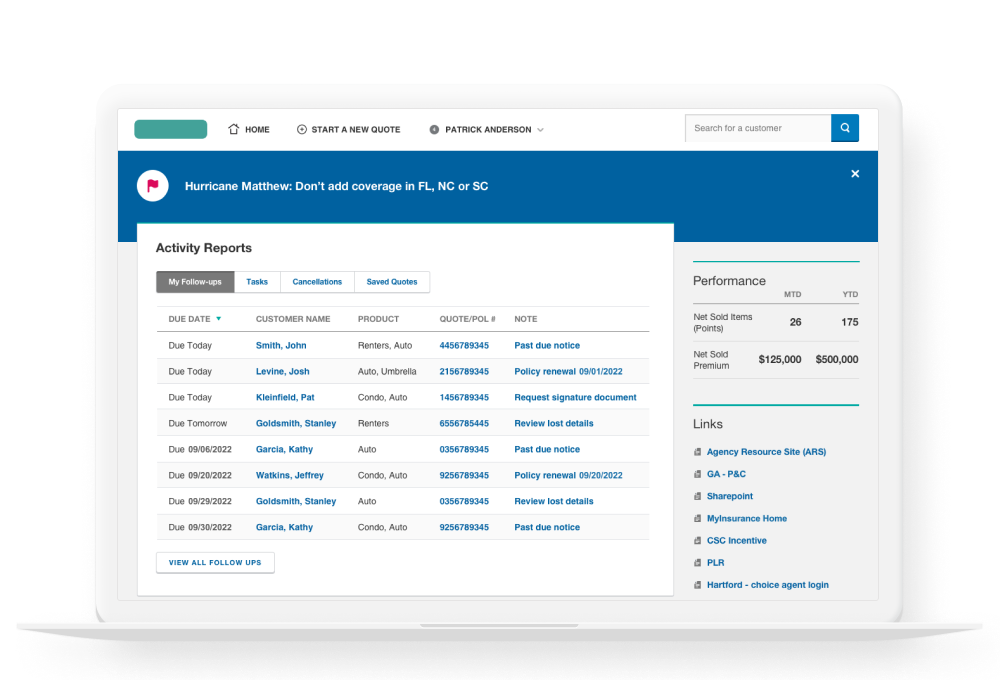
A configurable portal:
-
Enables role-based access
to custom dashboards, information and workflows to accommodate the needs and access levels of different user roles, from principals and producers to CSRs (LOBs). -
Enables configurable workflows
based on different user roles, giving site administrators the ability to establish custom access and set up custom workflows based on user roles. -
Allows for self-administration
empowering business users to easily configure the site for different user roles without requiring development resources.
4. Be consultative, helping users learn and understand the portal and your product
Perhaps what really sets a best-in-class agent portal apart is its ability to be consultative–to be more than just a place to enter data and get a quote, but a place to support the agent and other users through the quoting process; to act as a sales enablement tool.
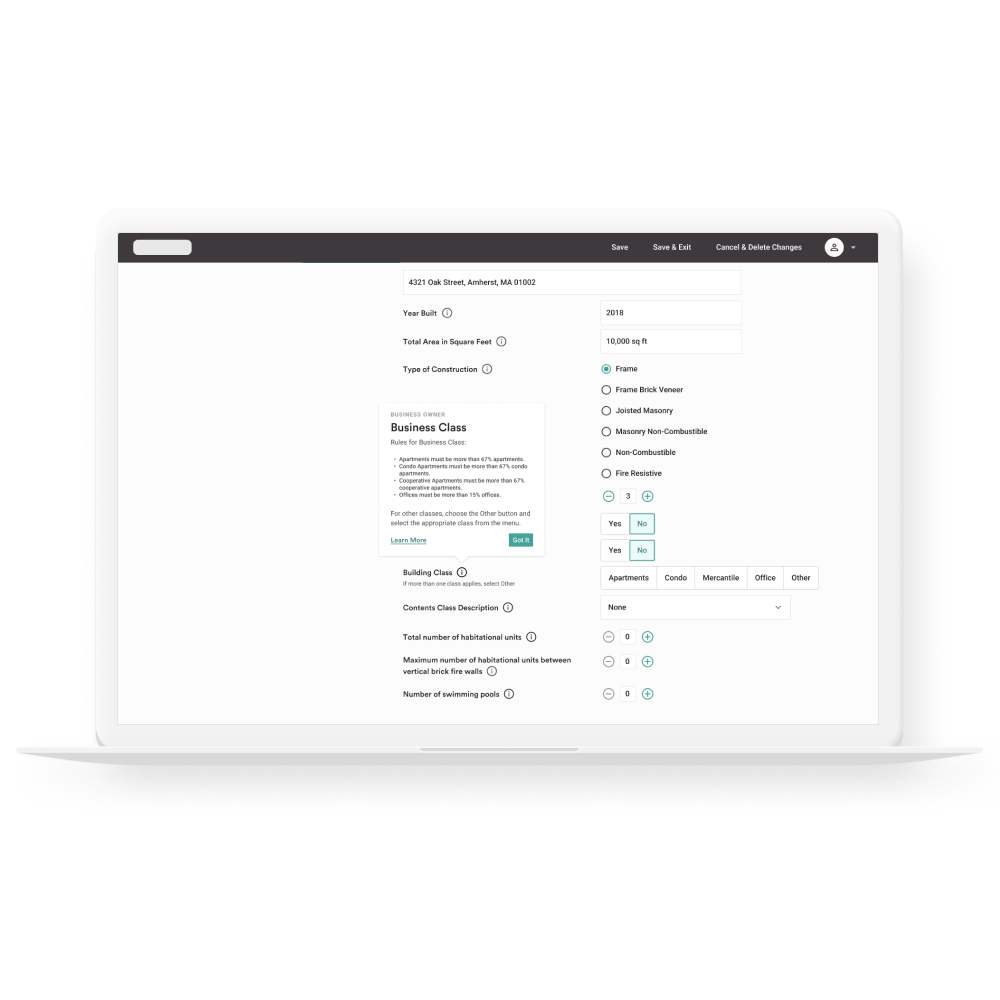
A consultative portal:
-
Provides in-context guidance
to agents, educating them on things like a carriers’ rules for what is eligible and ineligible, the kinds of business the carrier wants to write, and on insurance products in the local market. -
Issues immediate feedback
on errors/issues to help ensure agents include all the correct and necessary information the first time around and address any issues in real-time as they are working through the quoting process. -
Coaches and trains
agents and other staff as they are using it, helping them understand new products and how to successfully work with a carrier, ultimately reducing the learning curve for new users and enabling greater autonomy. -
Reinforces and communicates
why a quote did (or did not) work out, motivating users to quote the carrier again and improving efficiencies next time around.
5. Enable collaboration for teams working across an organization
A best-in-class agent portal is more than a data entry system, it’s a workspace where users can collaborate with one another and access all the information they need in one place to quickly and efficiently get an accurate quote from a carrier.
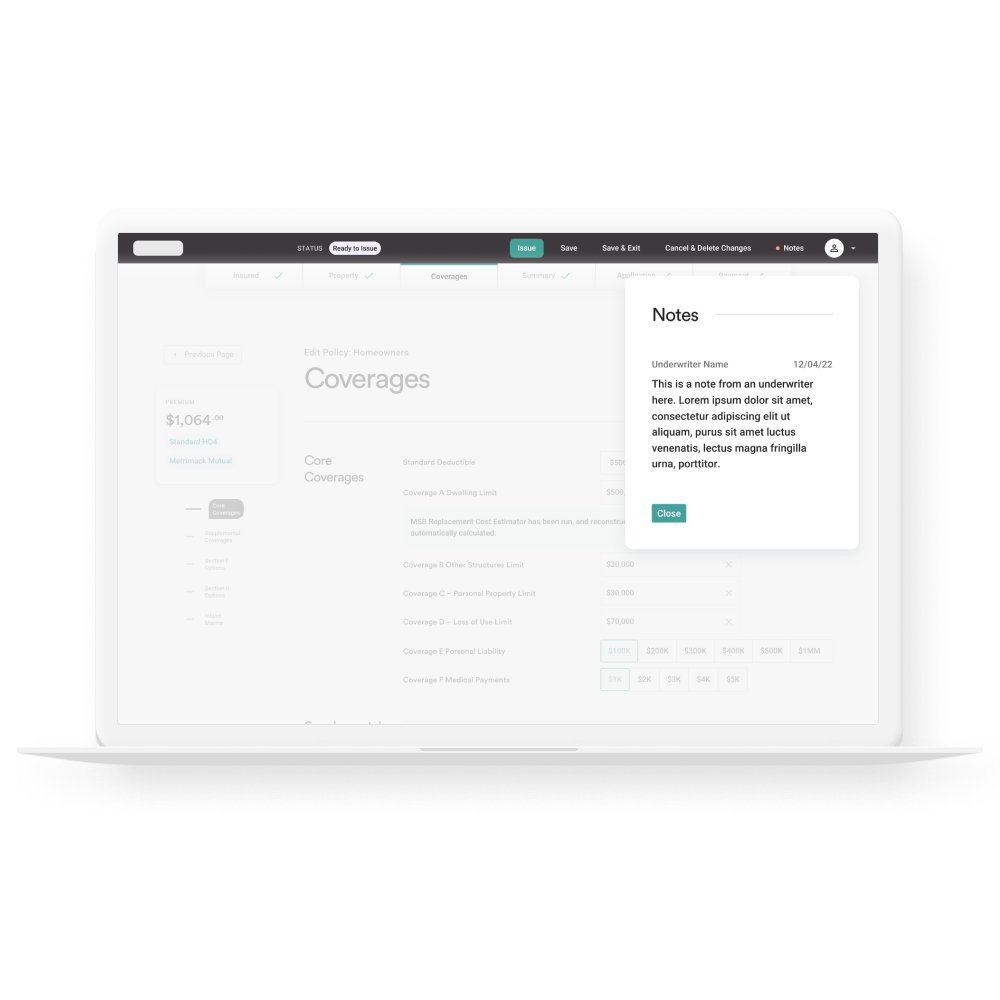
In order to foster this kind of collaboration, you'll want to make sure your agent portal:
-
Helps people at the same organization work together
by building in functionality that allows multiple users in different roles work on the same quote or customer profile together. -
Enables in-portal communication
by allowing users to share data, status updates, and to prompt and communicate within the platform. -
Empowers users to create robust customer profiles
that provide detailed information about customers, providing all the information any level of user would need about the customer to successfully perform their job.
A final note
Don’t mistake comfort with a portal for quality.
Many agents will report that a portal experience is good, or at least not bad, because they are used to it and don’t want change. Leaving things here, and calling a portal “good enough” ignores the fact that a better designed portal that is intuitive and easily learned will provide a big boost in productivity in the medium to long term, not to mention the increase in sales and retention that could be won by adding additional functionality and features that elevate the experience.
Subscribe to our monthly newsletter
The Slice, Cake & Arrow's monthly newsletter, delivers smart takes and trends from the intersection of UX and insurance fresh to your inbox.
Subscribe to The Slice